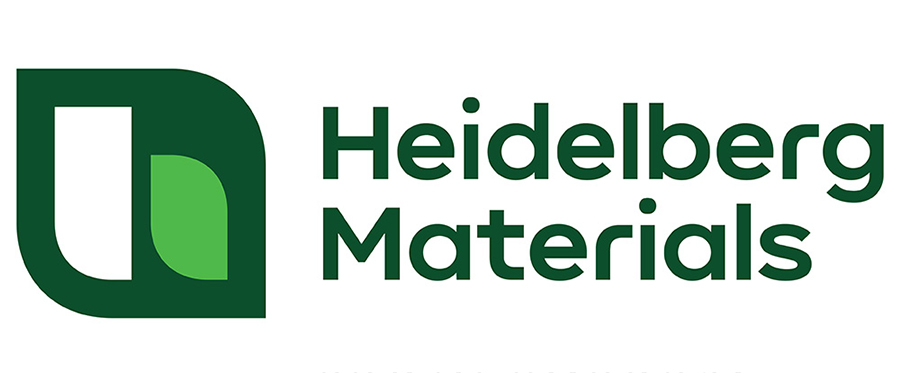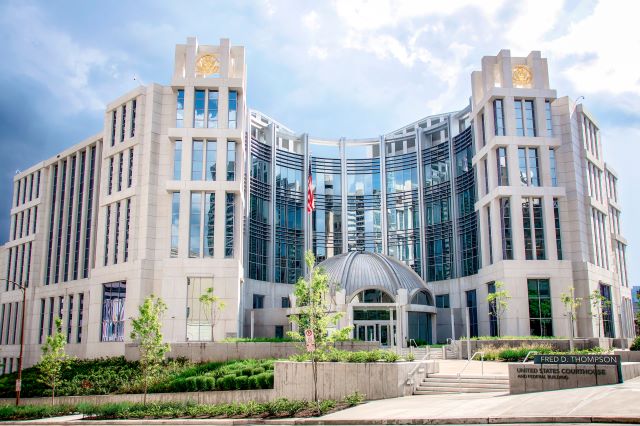Courthouses in the United States have historically featured stately design elements to communicate their civic importance, and the Fred D. Thompson U.S. Courthouse and Federal Building located in Nashville, Tennessee, is no exception. Its design combines the symmetry and elegant proportions of classical architecture with contemporary elements that indicate the building’s future-focus.
The building provides office space for the U.S. District Court for the Middle District of Tennessee, the U.S. Marshals Service, U.S. Probation, the U.S. Attorney’s office, GSA and the U.S. Senate. Its 280,000 square feet house eight courtrooms and 11 judges’ chambers, as well as a basement level with parking.
Concrete was chosen by the designers to help communicate the building’s dignity and permanence. Precast elements used in its construction include panels, columns, and box beams. The white color of the precast panels is highly symbolic, with the Michael Graves Architecture website stating, “the all-white building stands out as a stately and elevated institution in [its] context,” and that of Fentress Architects saying, “the exterior is clad in all white materials to express the grandeur of the federal judiciary.”
In addition to evoking classical columns and beams on the building’s exterior, the white precast elements also complement the prominent public art installation in the building’s rotunda. “The Robes of Justitia,” by Alyson Shotz, is made of eight glass smalti mosaic sections, achieving imagery that, according to the artist’s website, “makes reference to classical drapery rendered throughout art history in marble, mosaic, fresco and paint.”
Considering the white color’s symbolic as well as functional importance, project designers took steps to maintain the cleanliness of the building’s façade and specified that its precast panels be cast using TX Active® photocatalytic cement. Microorganisms, combined with the accumulation of fats, particulate matter and rain, are primarily responsible for gradual soiling and dulling of building exteriors, but the photocatalysts in TX Active® cement react with sunlight and accelerate the oxidation processes that occur in nature—essentially making the concrete self-cleaning.
GATE Precast Company of Ashland City, Tennessee, produced and placed the 30,000 square feet (2,800 square meters) of dynamic architectural precast concrete wall panels used on the courthouse. Heidelberg Materials supplied GATE with the 1,000 metric tons of TX Active® photocatalytic cement required for the project.
The Fred D. Thompson U.S. Courthouse and Federal Building is the largest TX Active® project in the world to-date.
Sustainability Benefits
In addition to aesthetic benefits, TX Active® conferred sustainability benefits on the project—an important consideration for the U.S. General Services Administration, who designated the courthouse meet LEED Gold BD+C standards.
“Photocatalytic cements are not only effective in keeping surfaces clean,” said Larry Rowland, Sustainability Market Manager, Heidelberg Materials North America, “but our TX Active® cement results in levels of photoactivity that abate air pollutants, especially NOx (Nitrogen Oxides) which the EPA deems an important pollutant and acid rain contributor. Cementitious materials, as it has turned out, offer an ideal vehicle for these photocatalytic agents, and they can be spread widely and evenly over both horizontal and vertical architectural surfaces.”
By abating air pollutants, the building is making a positive environmental contribution to its urban environment.
Furthermore, “one of the nice features of this concrete facade is that once it is installed, there is little to no follow-up maintenance for the life of the building,” said Mo Wright, Marketing Director, GATE Precast. Reduced maintenance equates to reduced costs and a reduced environmental footprint. Since the building was designed to accommodate the significant growth expected for the Nashville area over the next 30 years, longevity is a key consideration.
Construction for the courthouse began in June 2018 and was completed in August 2022, with occupancy occurring in May 2022.
Project Award Winner
The courthouse received the following awards in the Precast/Prestressed Concrete Institute’s 2024 PCI Design Awards:
- Special Award: Sustainable Design Award
- Government and Public Honorable Mention
To learn more about TX Active®, visit TX Active Cement | Heidelberg Materials North America.


